Protective Isn’t Just a Word—It’s a Legacy
When we talk about protective hairstyles for Black women, we’re not just talking about hair. We’re talking about heritage. About care passed down through hands and generations. About roots—both the literal ones growing from our scalps and the ancestral ones that ground our identities.
To wear your hair in a protective style isn’t just a beauty decision. It’s a conversation between past and present. Between who you are and who raised you. Between the rhythm of daily life and the rituals of self-preservation.
And more than anything, protective styling is about intention. It’s about choosing to rest your strands while elevating your self-image. To preserve moisture, prevent breakage, and protect your peace. To let your hair grow freely beneath the art you sculpt around it.
This article isn’t a how-to or a style roundup. It’s a space to sit with the meaning, memory, and beauty of protective hairstyles—and the women who wear them.
The Roots of It All: Cultural Memory in Every Parting
Long before the phrase “protective styling” hit beauty blogs or Instagram hashtags, Black women—and African women before them—have been wrapping, braiding, threading, twisting, and tucking hair for function and ceremony.
Cornrows weren’t just beautiful—they were maps. Bantu knots weren’t just cute—they were mathematical. Box braids weren’t just summer-ready—they were survival. Each technique told a story. Who your people were. What you carried. Where you were going.
Even today, the patterns our fingers carve in our daughters’ scalps connect us to this truth. Every parting is precise. Every coil has a purpose. Every scarf wrapped at night is a ritual of love.
Protective styles are not new. They’re sacred.
Why We Protect—Beyond the Aesthetic
There’s a practical wisdom in protective styling. 4C hair, especially when worn naturally, is vulnerable to dryness, tangling, and tension from the environment. Sun, wind, heat, even fabric friction—these wear down strands, especially at the ends.
A protective style shelters your hair from the elements. It reduces manipulation, which means less breakage. It helps retain length. It locks in moisture and creates a barrier between your strands and the world.
But it’s not just about length retention or a growth journey. It’s about rest. Your hair deserves time to just be. Your arms deserve a break from styling. Your mind deserves a moment of stillness while your crown is cradled.
When your hair is in a protective style, your time comes back to you. And sometimes, so does your joy.
The Hands That Braid Us Are Healing Hands
If you’ve ever sat between someone’s knees—your mother, your sister, your auntie—you know that hair care is not just maintenance. It’s intimacy. It’s trust.
The tug of a comb, the glide of edge control, the warm hum of praise when a braid lays just right. These are the moments that shape us. The ones where we feel seen, tended to, nurtured.
Braiding is therapy. Twisting is tenderness. Laying edges is artistry.
Protective styles hold more than hair—they hold emotion. The conversations we’ve had while getting our hair done are stamped into the strands. The advice. The secrets. The songs.
So when you wear your hair in a protective style, you’re not just wearing a look. You’re wearing connection.
Rest Isn’t Lazy—It’s Revolutionary
In a world that often demands Black women constantly do, to take time to protect yourself—your hair, your energy, your roots—is revolutionary.
It means choosing ease over expectation. Health over heat damage. Self-honoring over performance.
That low-tension braided style? That’s a boundary. That week of rocking jumbo twists under a silk scarf? That’s self-preservation. That wig install that gives your curls a break? That’s restoration.
Protective styling isn’t about being low effort. It’s about being high intention.
Because while your hair rests, you rise.
Your Hair, Your Timeline—Let It Breathe
There’s pressure in the protective styling world too. Pressure to grow. To “length check.” To be on some invisible timeline to hair that hangs.
But here’s the truth: hair growth is not a race. It’s not a trend. And your hair’s health can’t be measured in inches alone.
Some seasons, your hair will thrive in box braids. Other seasons, it will need oil massages and satin wraps and stillness. Some styles you’ll keep for eight weeks. Some, you’ll undo after four days because it doesn’t feel right.
Listen to your scalp. Your edges. Your soul.
A truly protective style doesn’t just shelter hair. It honors intuition.
Versatility Isn’t Vanity—It’s Power
One of the most sacred parts of being a Black woman is the ability to shapeshift through your hair. One day, you’re in Marley twists. The next, a slicked-back bun with a curly pony. After that, Fulani braids adorned with cowries. And next month? Maybe it’s a flat twist updo that feels regal.
Protective styles don’t limit your options. They expand them. You get to be every version of yourself—and each one is real.
This isn’t about hiding. It’s about choosing. And every choice is valid.
You don’t owe anyone an explanation for switching it up, going natural, going wrapped, going braided, going bold. You’re not inconsistent—you’re dynamic.
Edges Are Sacred. So Is Your Comfort.
We need to talk about tension.
Because protective styling should never hurt. Not during the install. Not after. Not while you sleep. Pain is not part of the package.
Your scalp isn’t meant to be pulled tight like a drum. Your edges aren’t meant to be braided down to their last breath. Your neck shouldn’t ache. Your hairline shouldn’t thin. Your temples shouldn’t burn.
If a style sacrifices your comfort for aesthetics, it’s not protective—it’s punishing.
Trust your instincts. Speak up in the chair. Take breaks. Choose low-tension options. And if you’ve already experienced damage, know that healing is possible. With patience. With products. With care. With you.
Your hair is a living thing. It deserves gentleness.
The Beauty of Letting Go—Taking Styles Down with Grace
Sometimes the most important part of a protective style is how you let it go.
That moment when you undo a braid, stretch out a twist, lift off a wig. It’s quiet. It’s revealing. It’s vulnerable. You meet your hair again—shrunken, stretched, sweaty, scented.
You detangle. You deep condition. You moisturize. You listen.
Taking your style down isn’t failure. It’s a reunion.
Celebrate that in-between phase. The moment where your hair feels light again. Let it breathe before the next install. Give thanks for what it endured. For the strands that stayed. For the ones that shed. For the roots still reaching.
That’s the heart of protection—it’s not just what we do. It’s how we release.
Protective Styling Isn’t Always Neat—And That’s Okay
Social media has given us stunning images of symmetrical parts and slick edges and perfectly maintained styles. But protective styling in real life? It’s not always tidy.
Your roots will grow. Your parts will blur. Frizz will happen. You’ll sweat. You’ll swim. You’ll fall asleep without wrapping it once in a while. That’s okay.
The goal isn’t perfection. It’s preservation.
You’re allowed to be a little fuzzy around the edges and still feel fly. You’re allowed to redo a front braid and leave the back alone. You’re allowed to love your style more in week three than week one.
Give your hair permission to live.
Check out this Ideas and Save your favorite.
1. Box Braids
Box braids are a timeless go-to. They’re versatile, stylish, and can last up to eight weeks with proper care. You can go jumbo, micro, waist-length, or bob-style—the possibilities are endless.
Why it works: Each braid protects your natural strands while allowing easy access to your scalp for moisturization.
Styling Tips:
- Use lightweight braid spray daily to hydrate your scalp.
- Experiment with half-up styles, buns, or braid cuffs for added flair.
- Be gentle when styling edges to avoid tension.
1
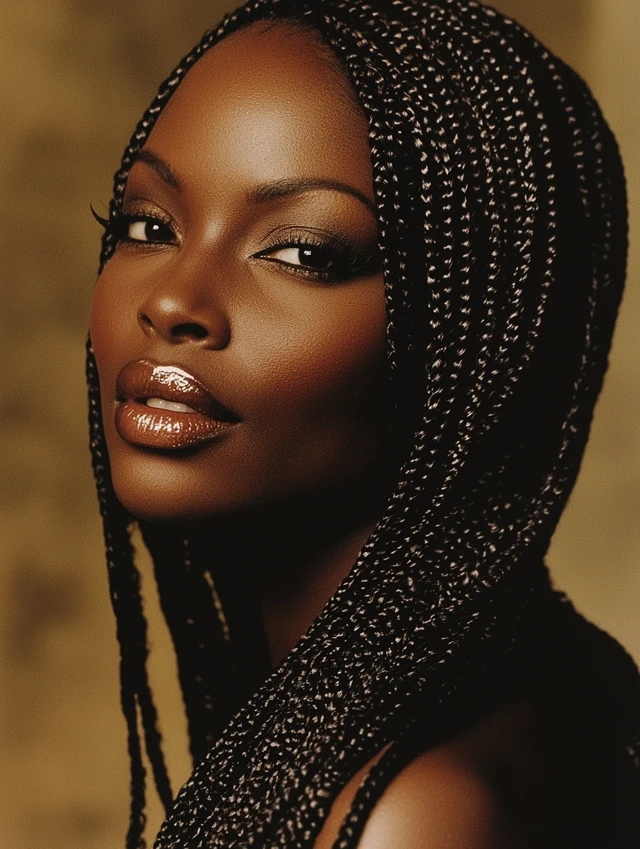
2
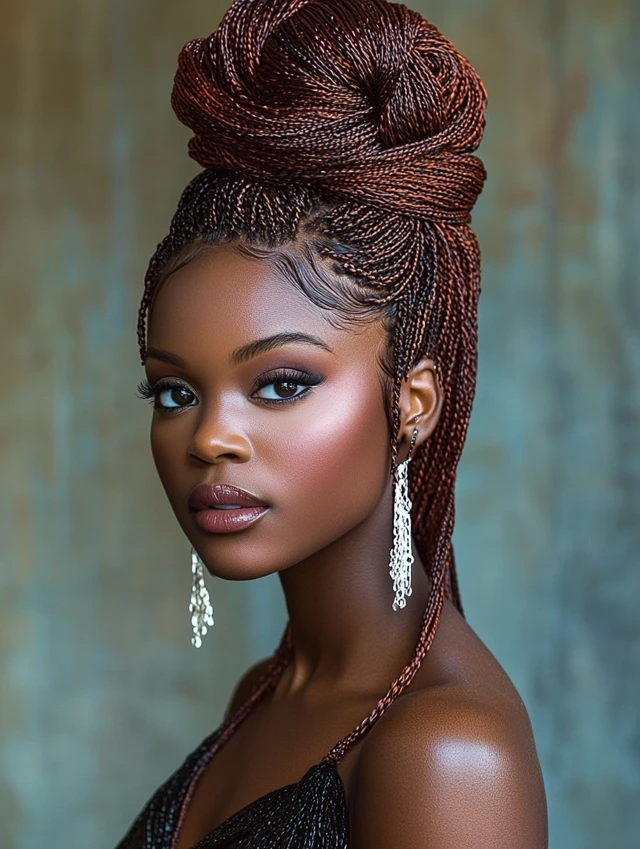
3
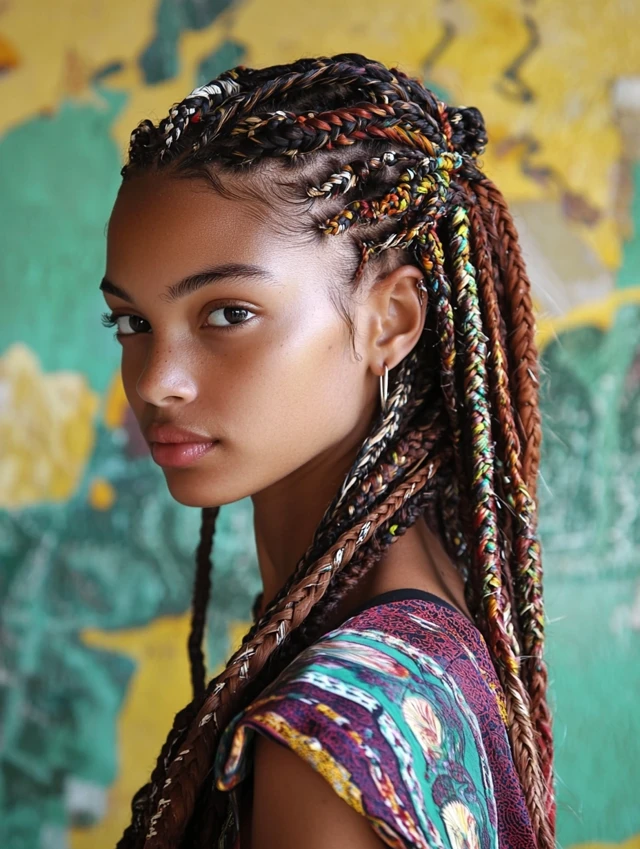
Best For: All hair types; great for vacations and long wear.
2. Knotless Braids
Knotless braids are a more modern and scalp-friendly version of box braids. They start with your natural hair and gradually feed in extensions, reducing tension.
Why it works: They’re lighter on the scalp and more comfortable, making them a favorite for first-timers and tender-headed queens.
Styling Tips:
- Go for medium-sized braids for balance between style and time.
- Use mousse and hot water on ends to keep them neat.
- Style into ponytails or buns without tugging at your roots.
1
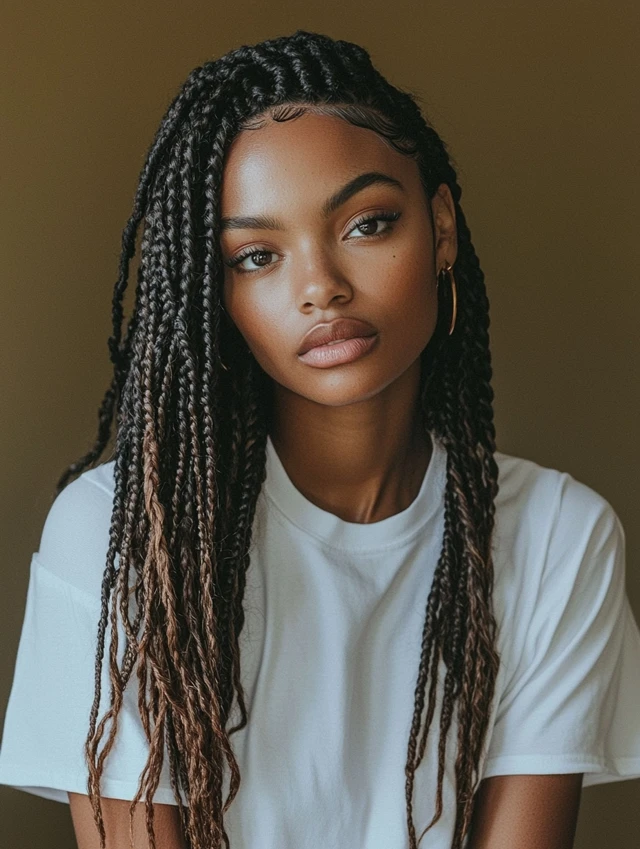
2
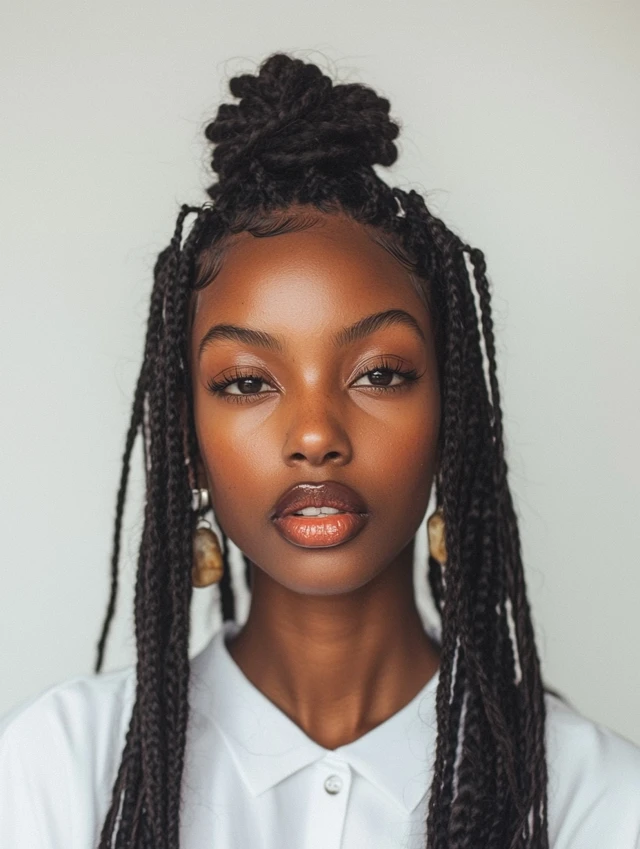
3
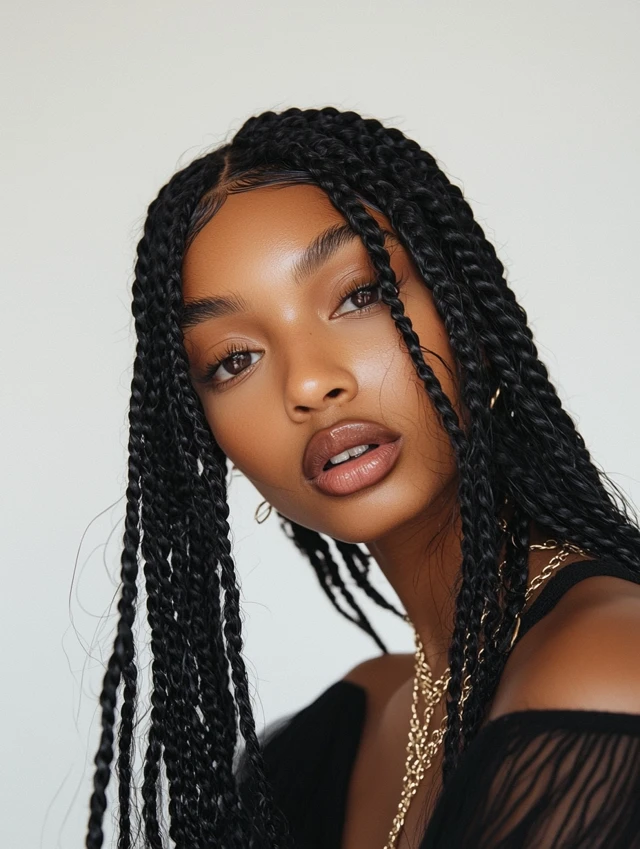
4
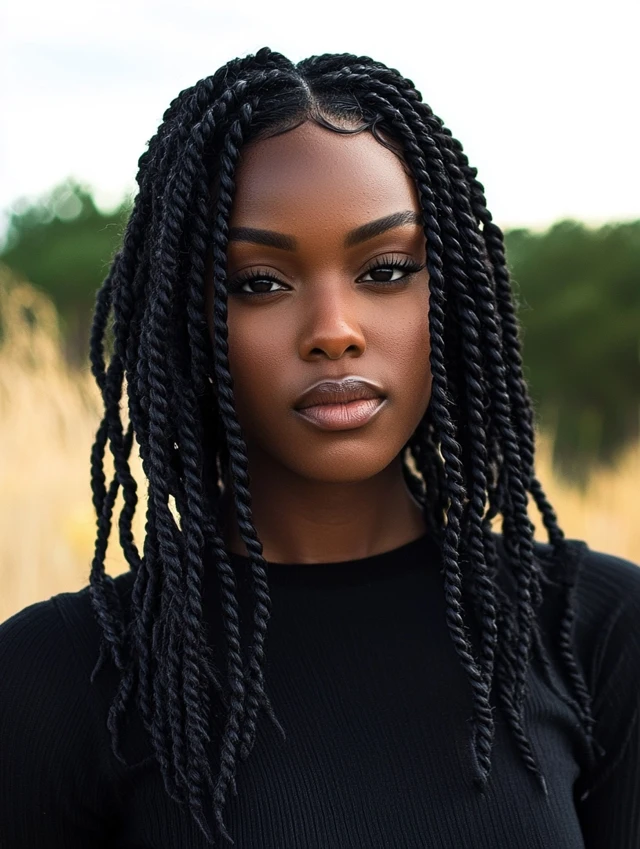
Best For: Long-term wear, sensitive scalps, and growth protection.
3. Passion Twists
Soft, boho, and absolutely stunning—passion twists give you the curl definition of natural hair with the low maintenance of a twist style.
Why it works: The water wave texture mimics natural curls while protecting your real hair underneath.
Styling Tips:
- Keep them hydrated with a lightweight leave-in spray.
- Avoid excess buildup by clarifying your scalp every 1–2 weeks.
- They look especially great in updos or loose half-up styles.
1
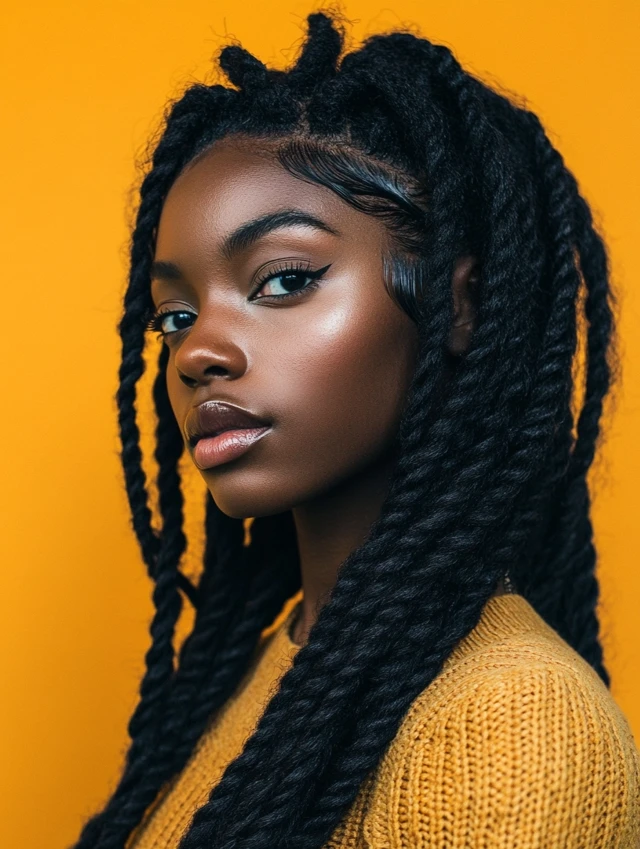
2
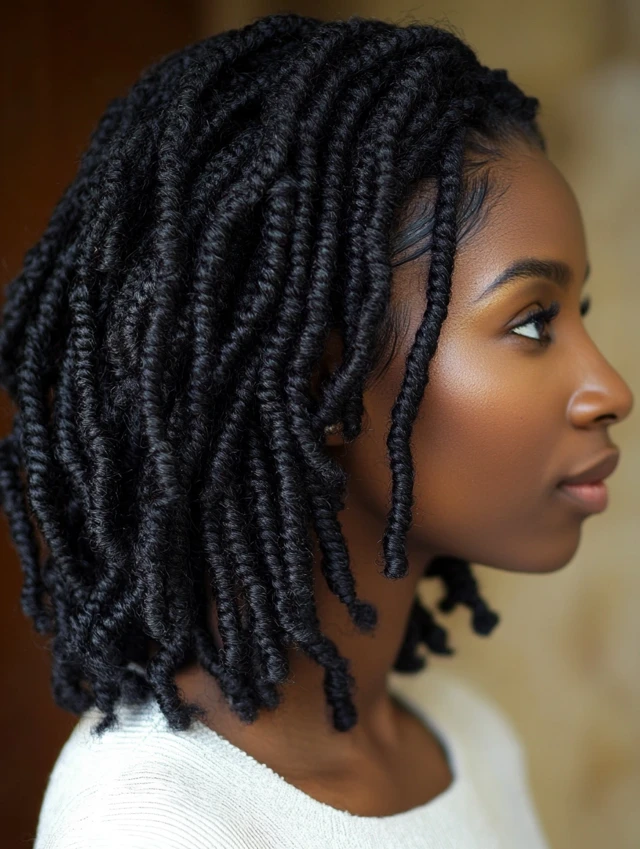
3
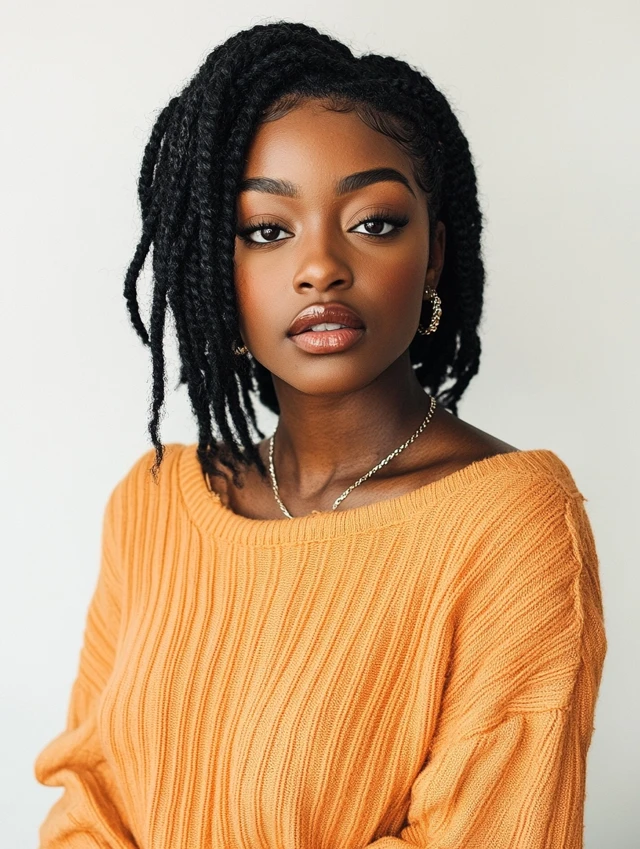
Best For: Creative styles, natural curl lovers, and vacation-ready looks.
4. Faux Locs
Faux locs offer the beauty of locs without the permanence. They can be goddess-style, distressed, soft, or classic—and they last weeks with minimal styling.
Why it works: They fully cover your natural hair, shielding it from daily manipulation and environmental stress.
Styling Tips:
- Keep your roots moisturized and massage your scalp regularly.
- Add beads or shells for cultural flair.
- Sleep with a silk scarf or bonnet to prevent frizz.
1
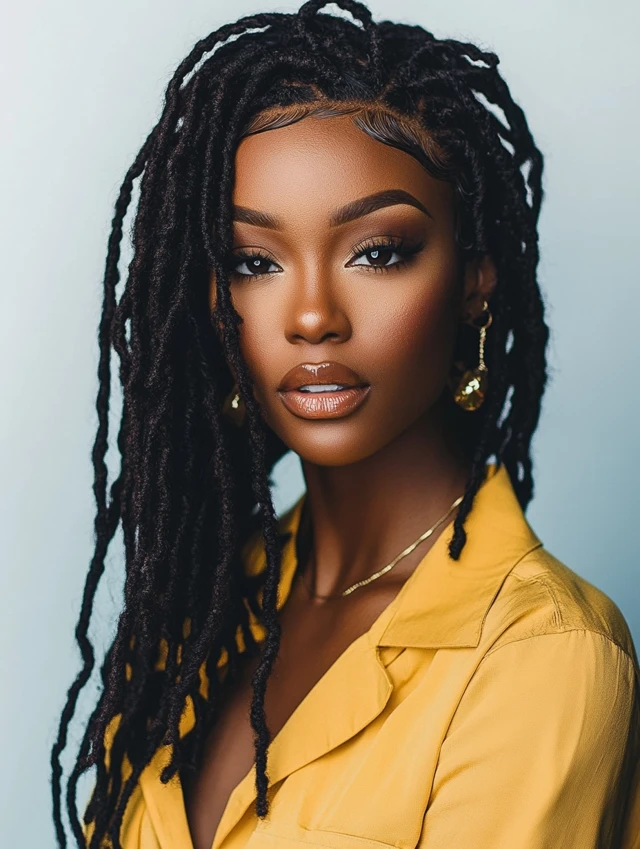
2

3
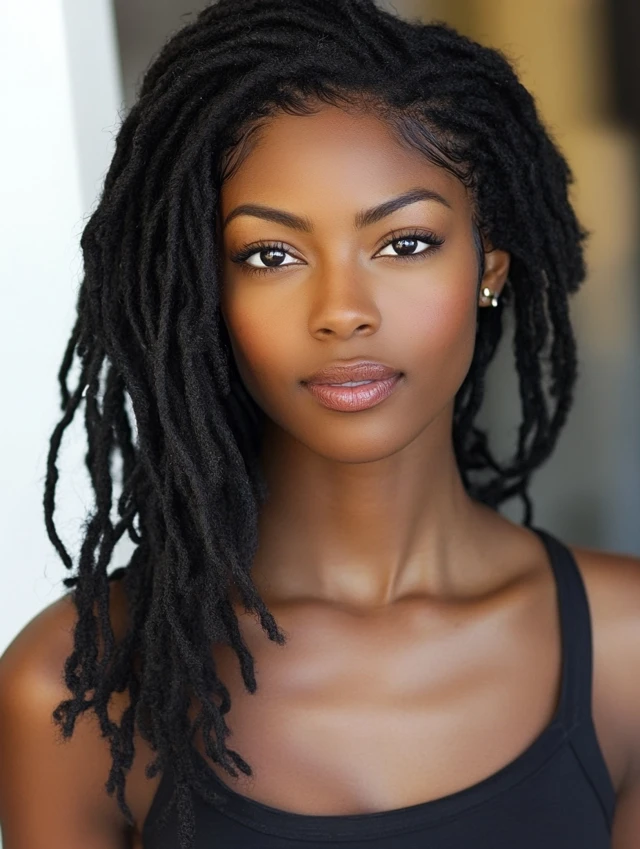
4
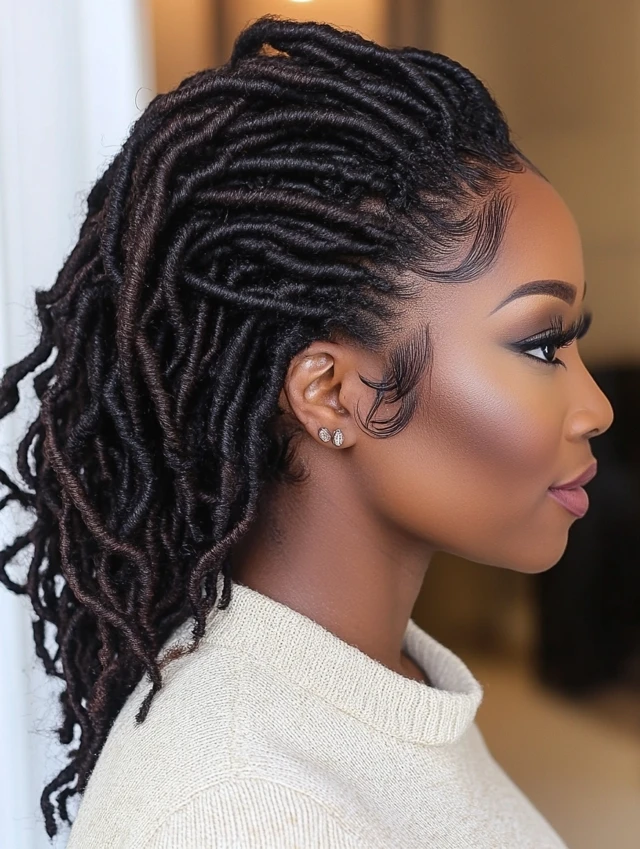
Best For: Bold, long-lasting protective styles and low daily upkeep.
5. Cornrows
Cornrows are sleek, easy to maintain, and endlessly versatile. You can wear them straight back, zig-zagged, or in complex patterns depending on your mood.
Why it works: They lie flat to the scalp, making them perfect under wigs, hats, or for showcasing facial features.
Styling Tips:
- Keep your scalp oiled with a light formula to prevent flaking.
- Wear a satin scarf at night to maintain sharp lines.
- Jazz them up with gold cuffs or colored thread.
1
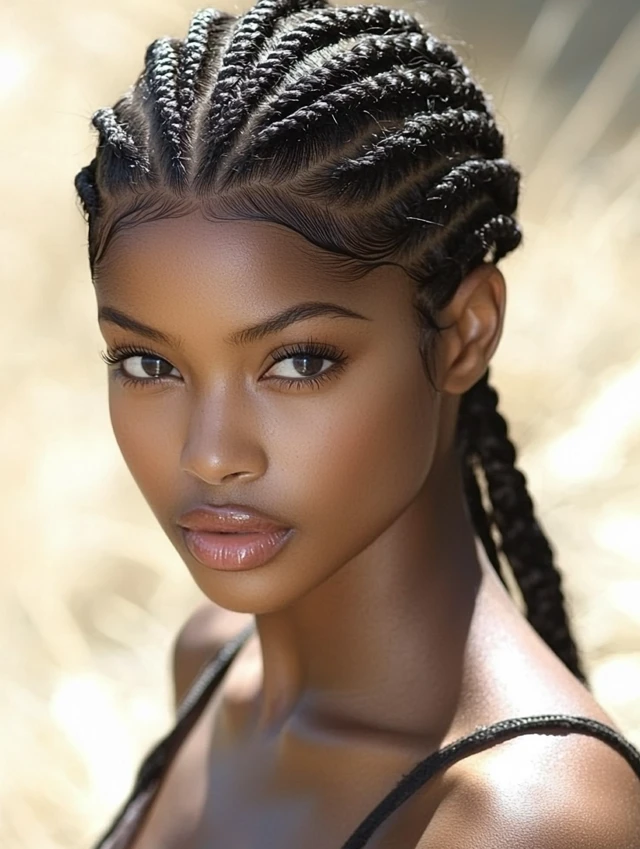
2
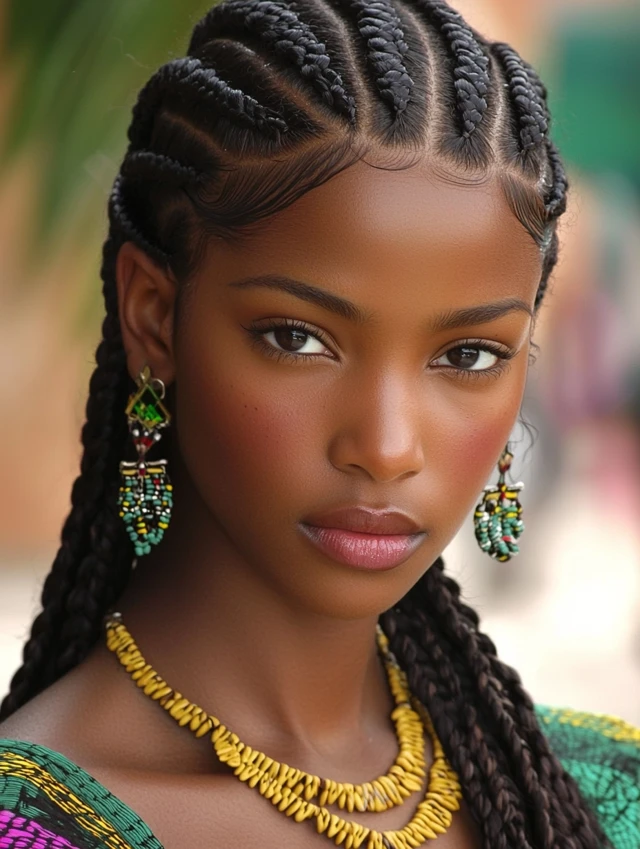
3
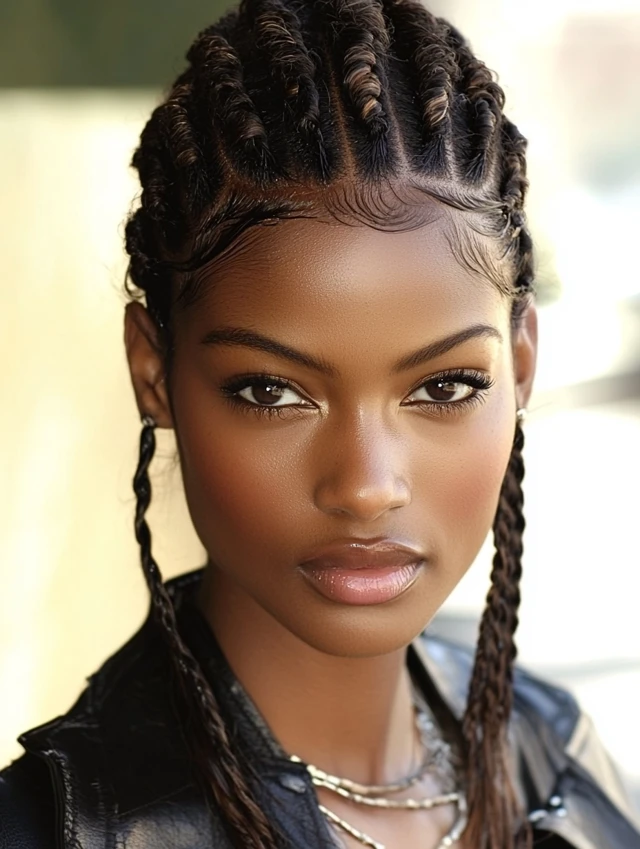
4
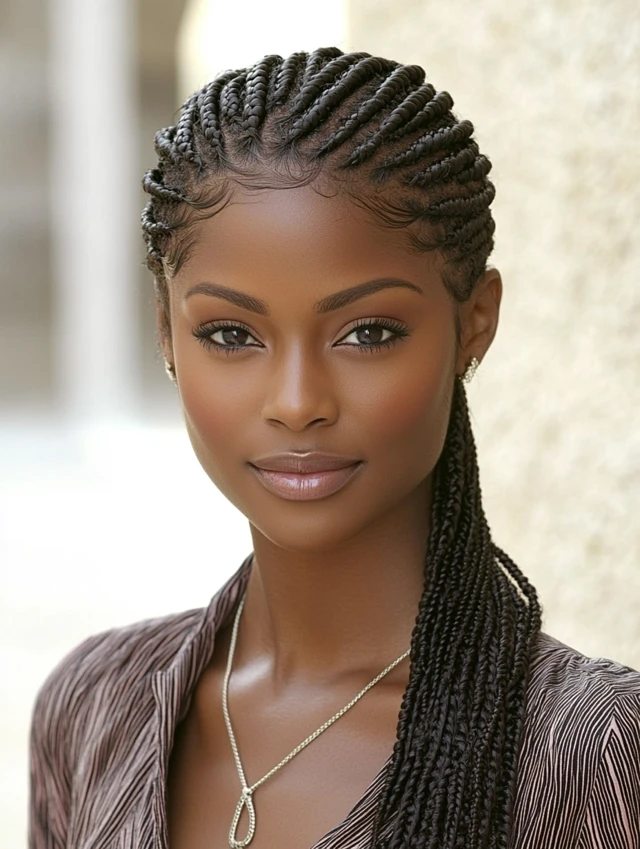
Best For: Minimalist styles, active lifestyles, and wig prep.
6. Twists (Two-Strand or Flat)
Two-strand twists are simple, elegant, and ideal for low-manipulation styling. They’re a great DIY protective style and work well for medium to thick textures.
Why it works: They tuck your ends away while giving curl definition if you choose to unravel them later.
Styling Tips:
- Use a butter or twist cream for hold and moisture.
- Avoid overly tight roots to prevent stress on edges.
- Style into buns or puffs for variety.
1
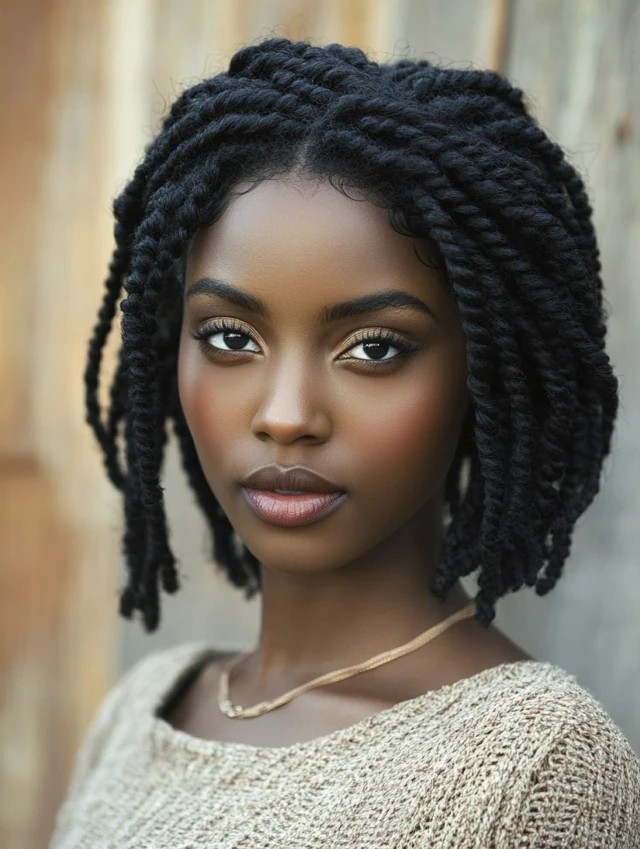
2
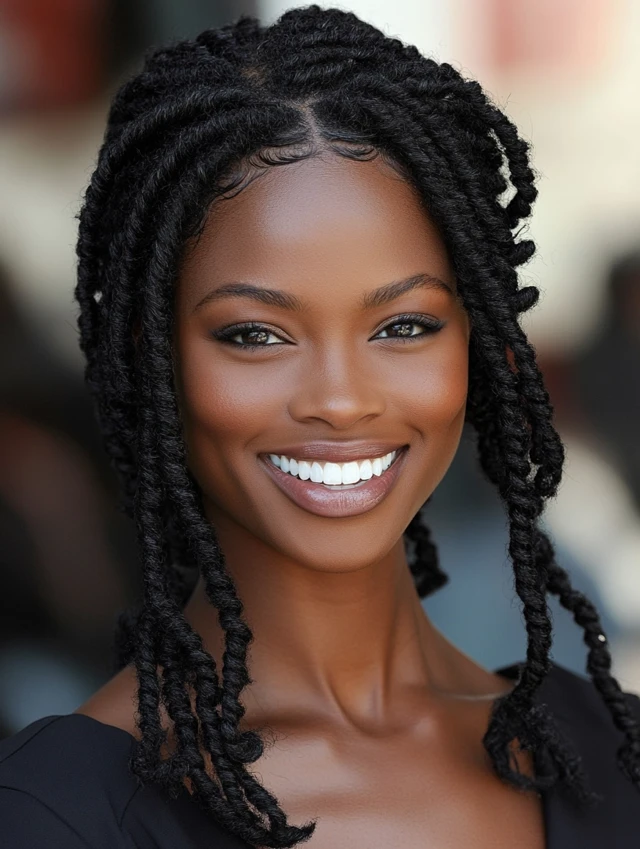
3
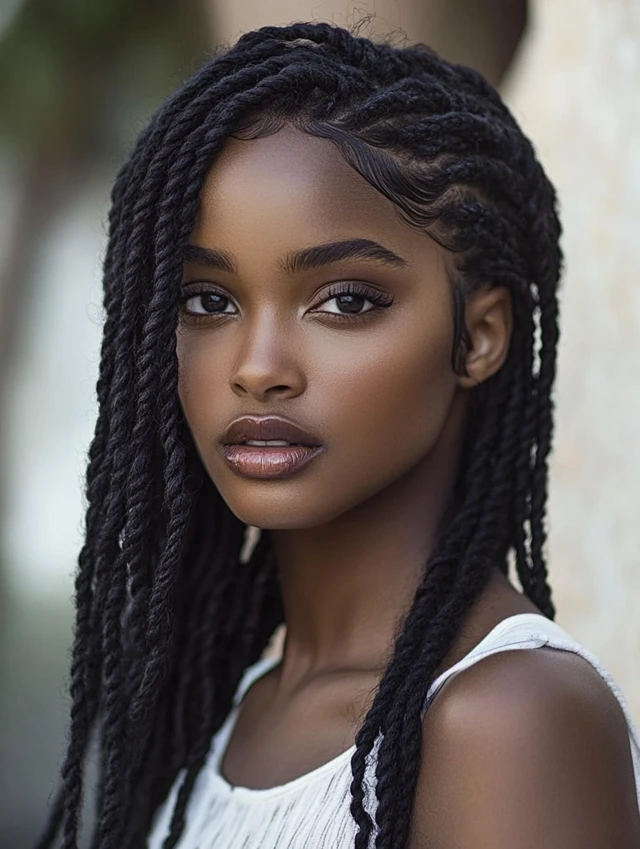
4
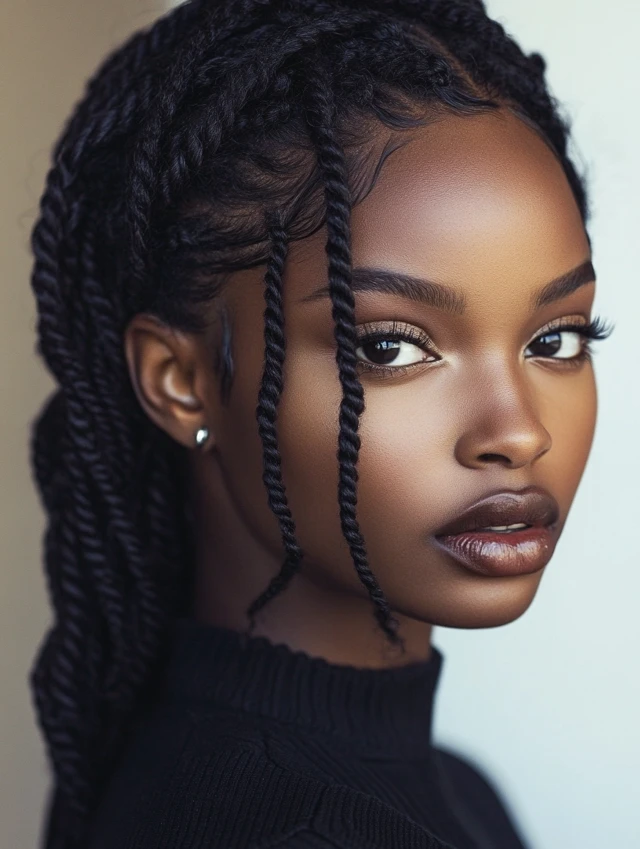
Best For: Naturalistas looking for a blend of protection and definition.
7. Bantu Knots
Bantu knots are deeply rooted in African heritage and offer both a stunning look and a defined twist-out once unraveled.
Why it works: They tuck ends in completely and double as a heatless styling method.
Styling Tips:
- Section hair evenly and use gel or cream for smooth knots.
- Make sure they’re secure but not too tight to avoid breakage.
- Rock them as-is or take them down after a few days for gorgeous curls.
1
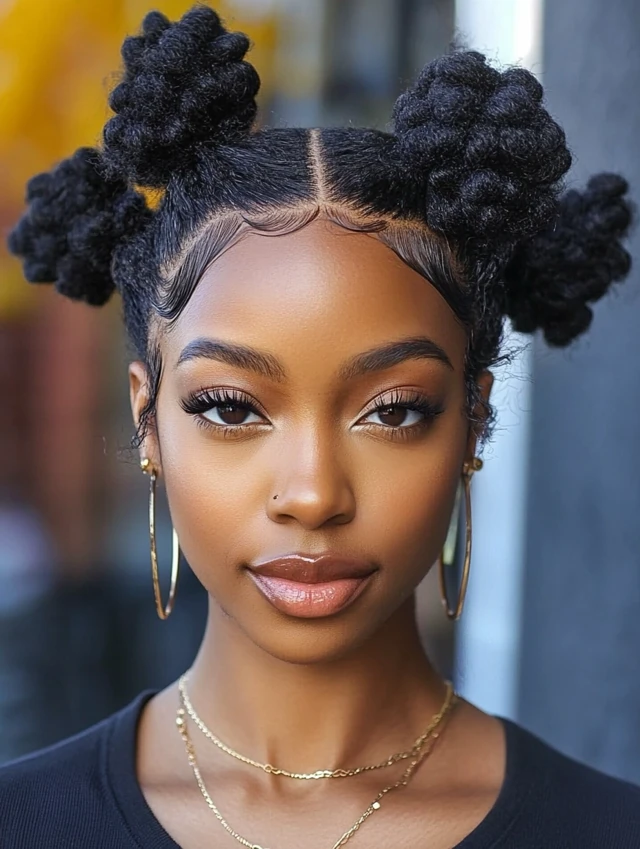
2
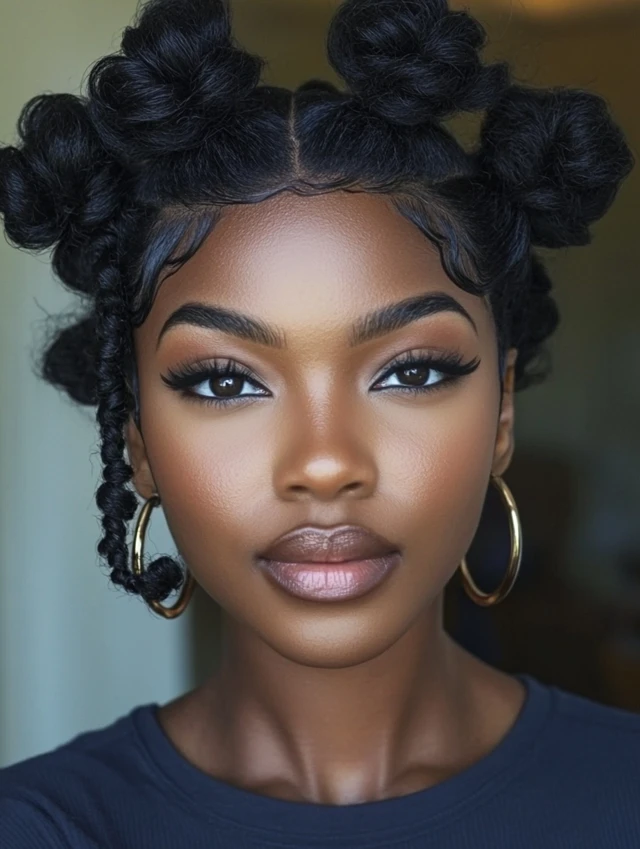
3
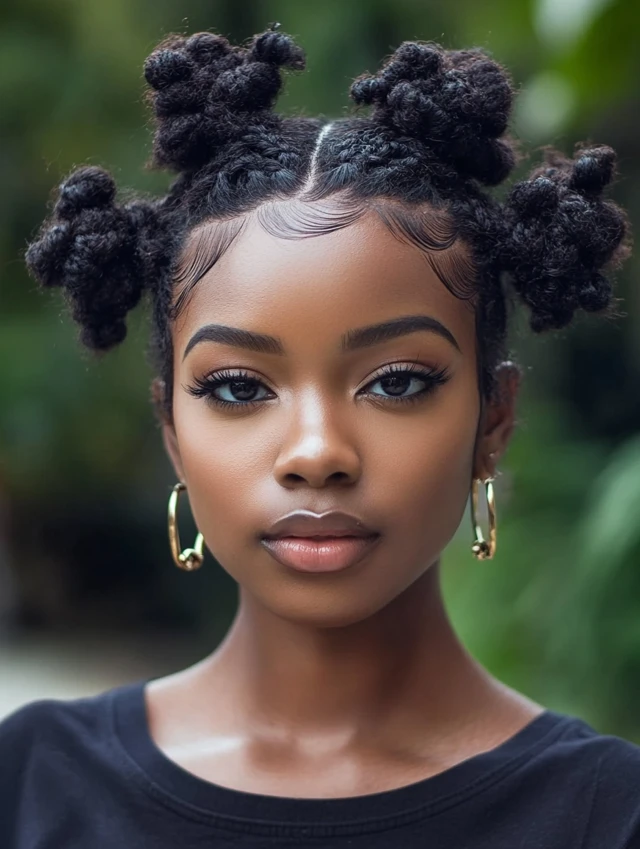
4
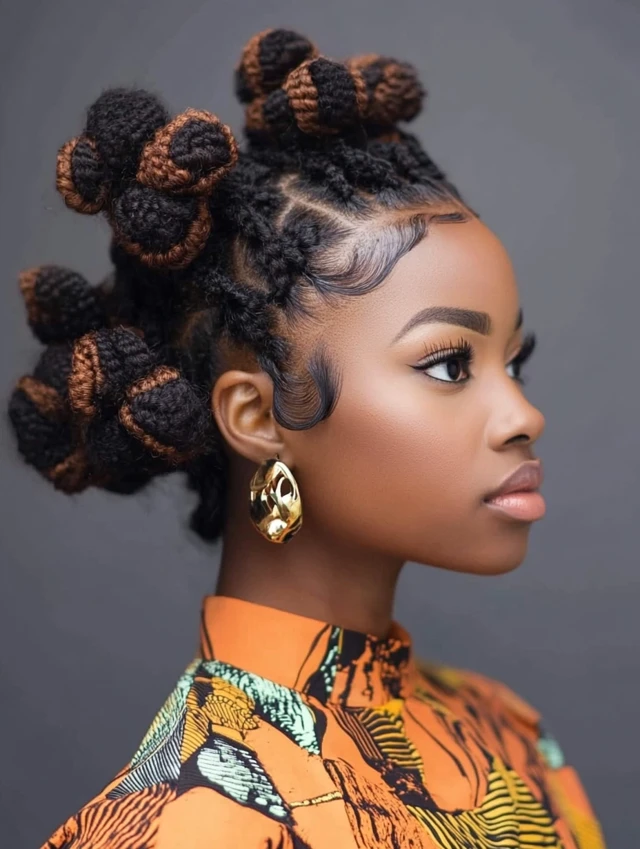
Best For: Bold styling, short-term protection, and defined twist-outs.
8. Crochet Braids
Crochet braids are the ultimate protective style for switch-up lovers. You can install curly, wavy, braided, or loc textures in half the time of traditional braiding.
Why it works: Your natural hair is braided underneath, while the extensions are looped in without tension on your strands.
Styling Tips:
- Moisturize your cornrow base before and during wear.
- Trim the crochet hair for a natural finish.
- Use mousse or gel to tame frizz as needed.
1
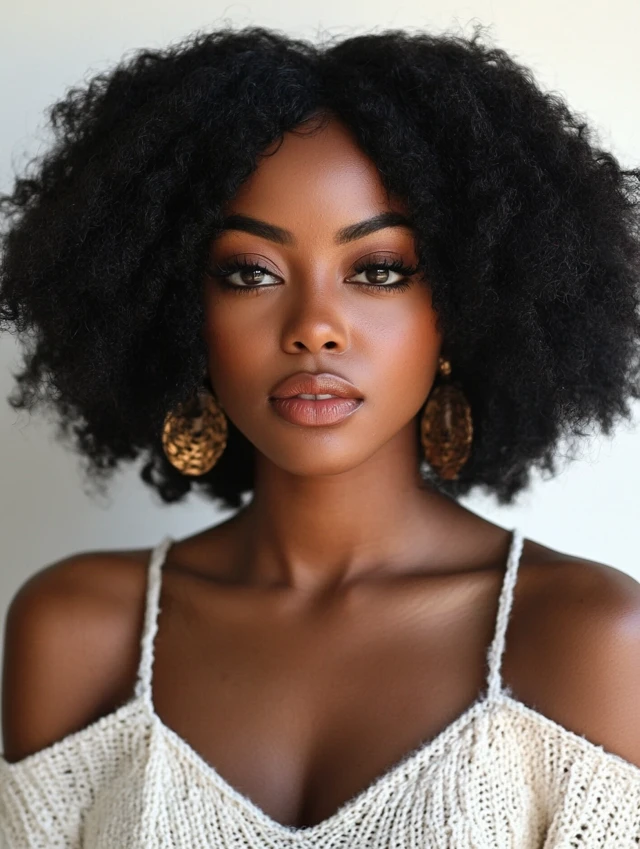
2
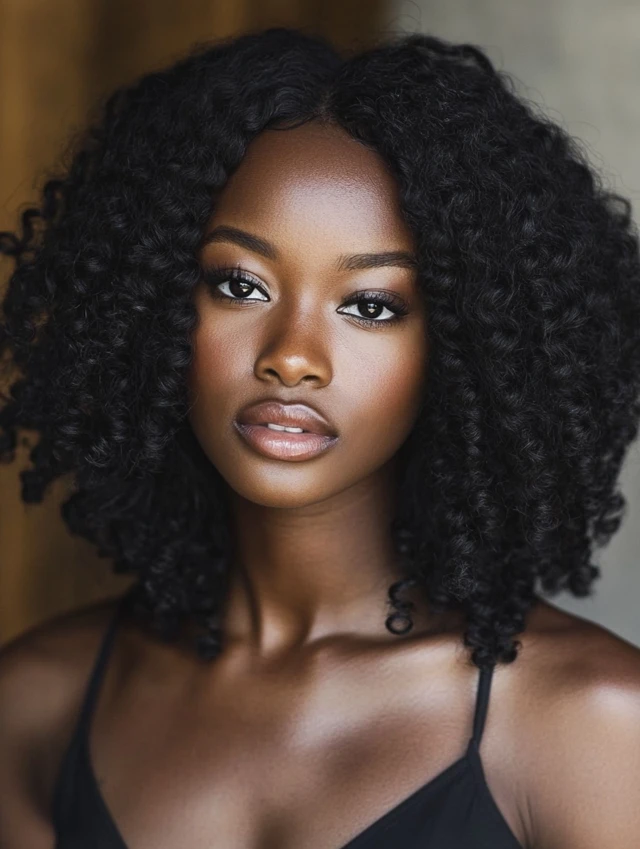
3
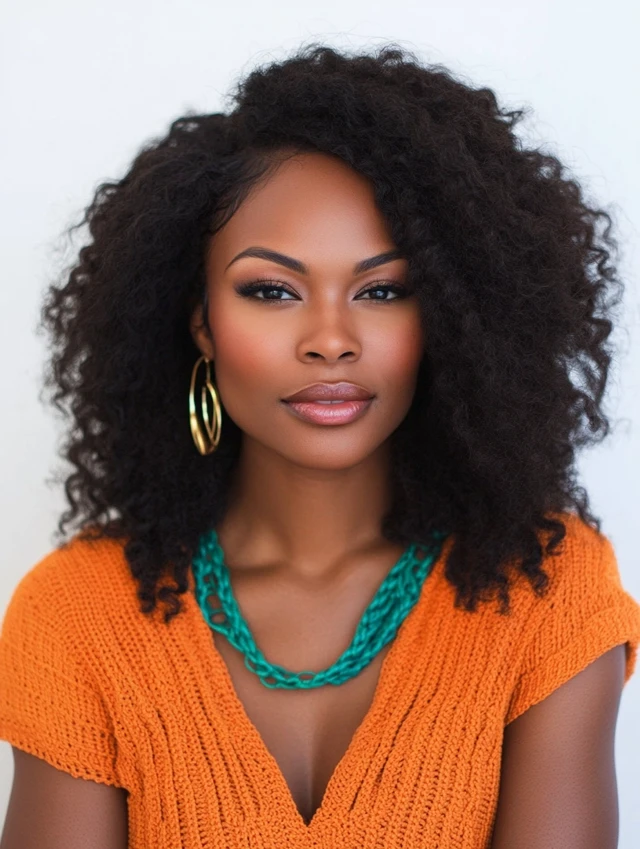
4
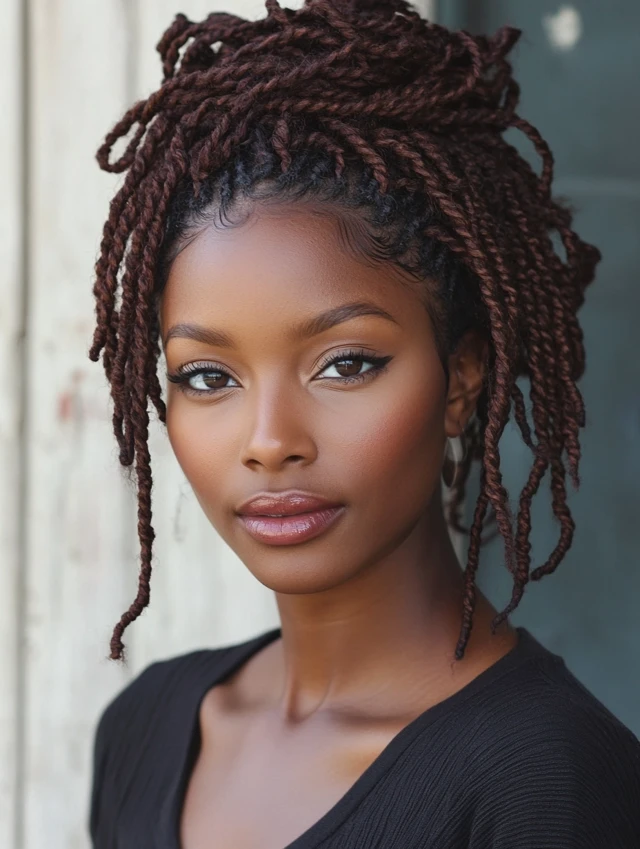
Best For: Quick installs, versatility, and low maintenance.
9. Wig with Cornrow Base
Wigs offer full protective coverage when your natural hair is braided underneath. This method gives ultimate versatility—you can be curly one day and bone-straight the next.
Why it works: Your real hair stays tucked away, untouched by heat, daily manipulation, or the elements.
Styling Tips:
- Clean your scalp regularly with witch hazel or diluted shampoo.
- Always use a wig cap and secure your wig without excessive glue.
- Let your hair breathe in between installs.
1
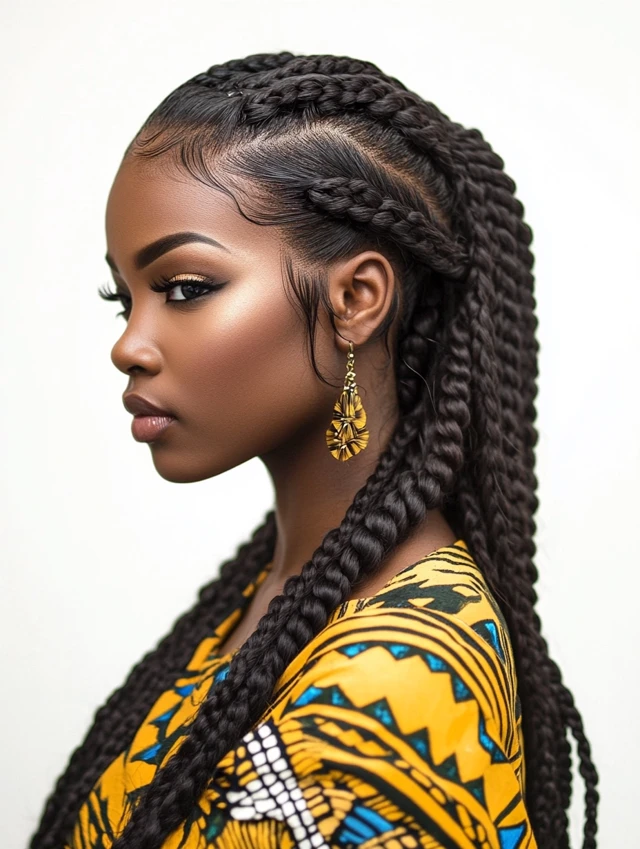
2
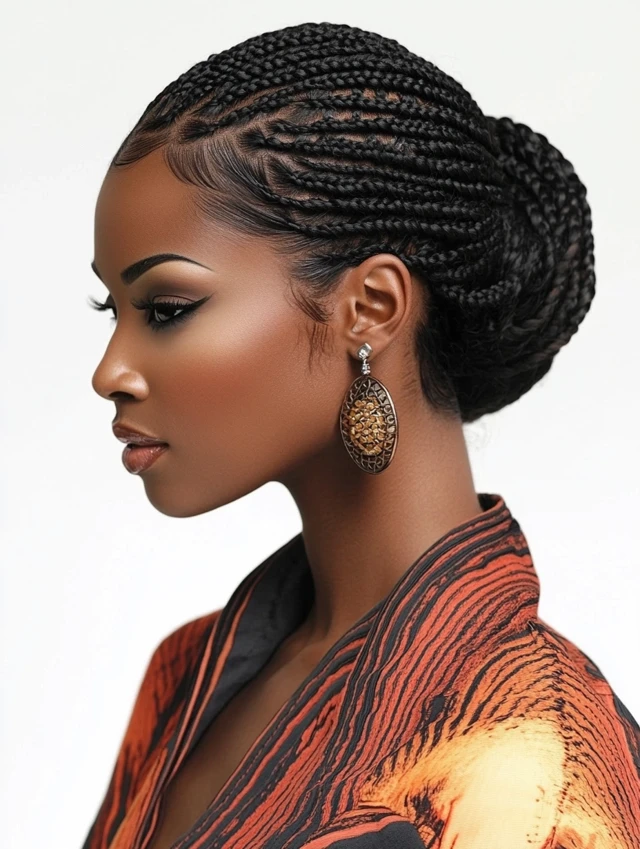
3
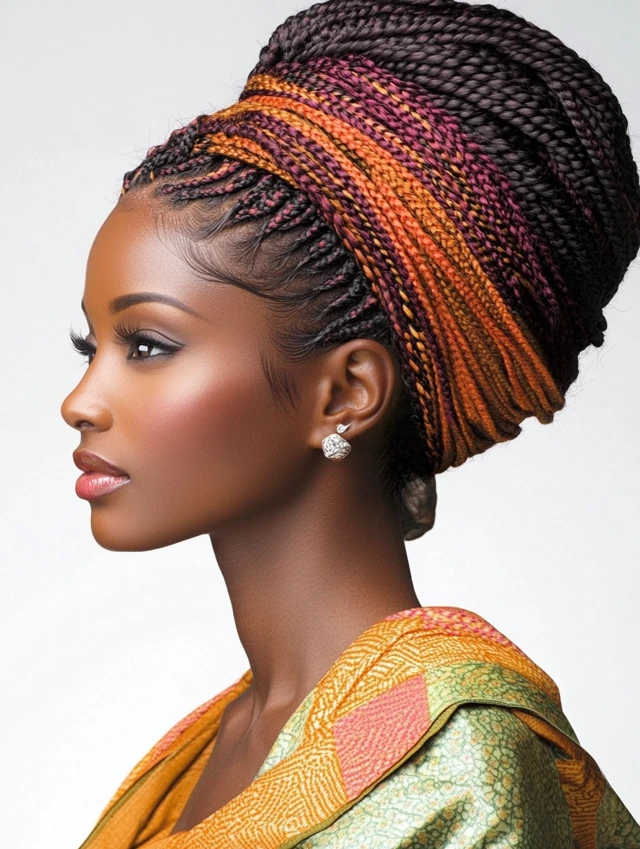
Best For: Hair growth protection and frequent style changes.
10. Halo Braid or Crown Braid
This regal, elegant braid circles around your head like a crown—making it perfect for weddings, events, or days when you want to look divine with zero fuss.
Why it works: It fully protects ends while elevating your entire look with a goddess vibe.
Styling Tips:
- Add a shine mist for definition and smoothness.
- Use edge control to polish your hairline.
- Style with bold earrings and dewy makeup for a soft glam finish.
1
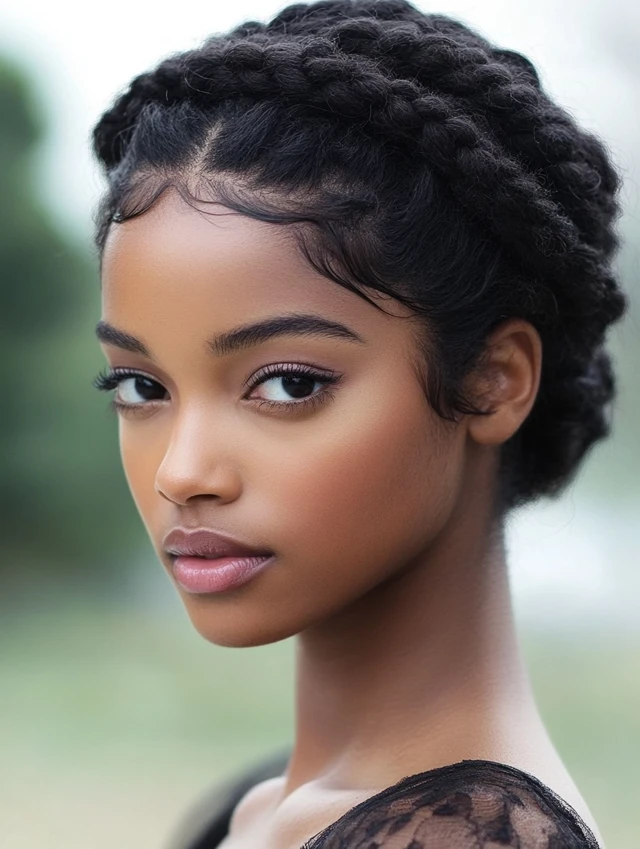
2
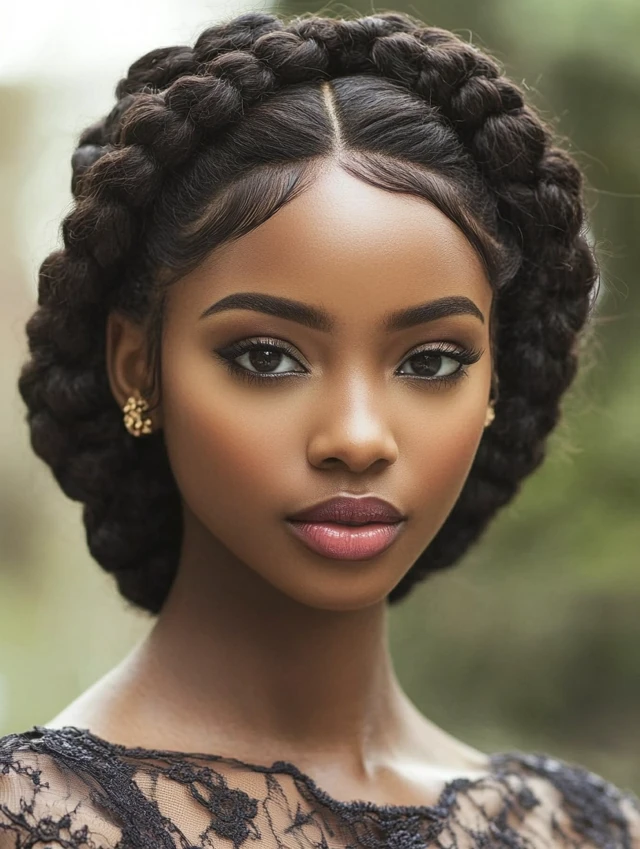
3
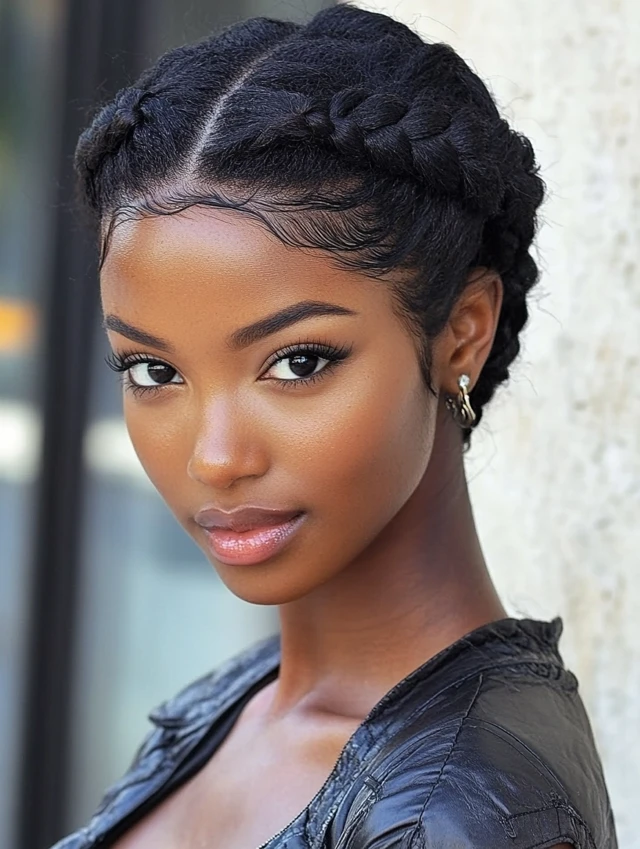
4
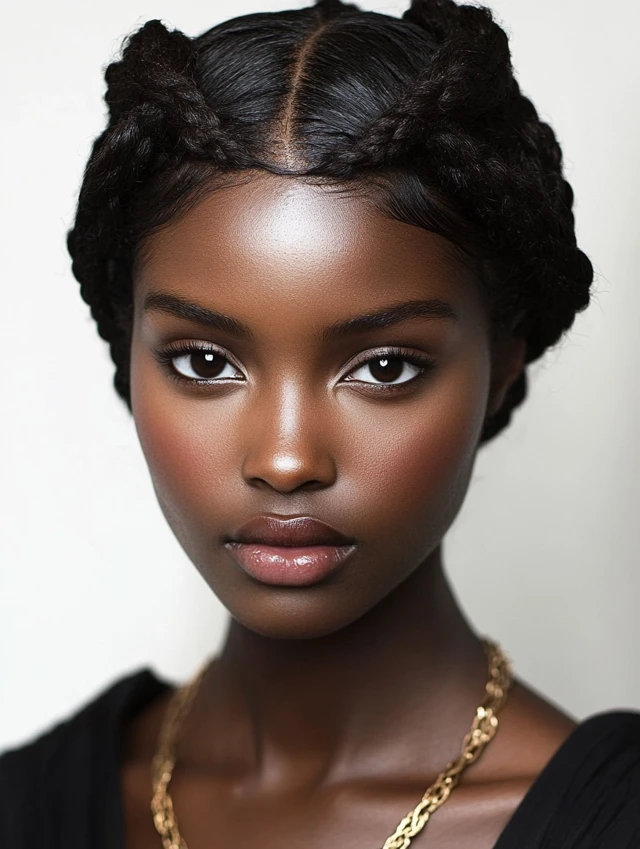
Best For: Special occasions, short-term wear, and classic beauty.
Style Is Personal. And So Is Pride.
Protective hairstyles carry so many conversations inside them. They speak to culture, history, regional roots, spiritual grounding. But they’re also deeply personal.
What feels protective for one woman may feel performative to another. Some feel their best in long knotless braids. Others in a high puff with a scarf. Some wear wigs for convenience. Some twist nightly. Some cornrow every Sunday while watching TV.
There’s no one way to honor your crown. And no one style that proves your pride.
Wear what makes you feel like you—not what wins praise. Because the most protective thing you can do for your hair is to listen to your spirit.
Final Reflections: A Love Letter to Every Crown in Transition
This is for the women in satin bonnets and cornrows on the couch. For the ones getting their hair braided in kitchen chairs and beauty shops and on stoops. For the ones deep conditioning at 2AM. For the ones scrolling style inspiration and wondering what to try next. For the ones in wigs and wigs and puffs and plaits. For the ones just learning to touch their hair with kindness.
Your hair is worthy.
Your routine is valid.
Your style is sacred.
Protective styling isn’t just about ends. It’s about beginnings. About showing up in the world with your roots intact and your confidence unshaken.
You don’t owe anyone length. You don’t owe anyone explanation. You don’t owe anyone straightness, neatness, or maintenance.
All you owe yourself is softness. Intention. And space to evolve.
So wear your crown in whatever way lets your soul rest and your hair grow. That’s the kind of protection that lasts.